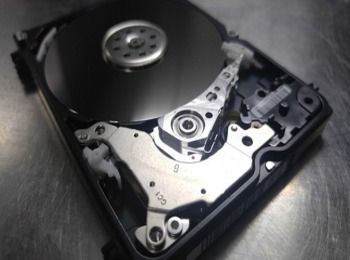Almost everyone right now owns a tech device or two or even more. Whether it is a smartphone, tablet or iPad, laptop, or computer, you store different types of data on these devices that can prove disastrous once they break down and you are no longer able to access them. It’s worse if you don’t have a backup in place because something like RAID data recovery is your last resort in getting some, if not all, of your lost data back. These data can be anywhere from text files and documents to photos and videos that have different storage requirements.
 But since you constantly use these devices in your day-to-day, it is inevitable for them to wear out and get corrupted or broken. Hence, you can never truly consider these devices for permanent data storage or at least save another copy in an external flash drive or hard drive for added security. There’s also the cloud that has made our lives even easier and more convenient these days. It is easier said than done, though, and we still go back to our old ways of storing almost all our data on one device because of convenience on our part. Once it gets broken and your data is gone, you’ll be full of regrets but it won’t still get you anywhere.
But since you constantly use these devices in your day-to-day, it is inevitable for them to wear out and get corrupted or broken. Hence, you can never truly consider these devices for permanent data storage or at least save another copy in an external flash drive or hard drive for added security. There’s also the cloud that has made our lives even easier and more convenient these days. It is easier said than done, though, and we still go back to our old ways of storing almost all our data on one device because of convenience on our part. Once it gets broken and your data is gone, you’ll be full of regrets but it won’t still get you anywhere.
Modern laptops and desktops can hold a massive amount of information, including tens of thousands of pictures and millions of pages of text. Despite their storage capacities, these devices should not be used as a means to permanently store digital information because they’re prone to breakage and data corruption. Recovering data from one of these failed devices is difficult, and requires a high-level of expertise that’s not always accessible to the person that likes to fix things themselves.
Older laptops that were constructed with traditional hard drives were fairly simple to pop open and fix. You could unscrew a few screws holding the case together, and then plug into the drive via a universal SATA port to retrieve the data. Opening the actual drive itself is not without risk or advisable as dust could and will enter the drive causing contamination and it can always cause additional damaged during the process.
(Via: https://betanews.com/2017/12/05/diy-data-recovery-challenges-and-alternatives/)
When it comes to tech problems, the best decision is to always take the particular device to an expert for help because you may end up causing more damage than what was previously. You need to be knowledgeable and skilled in data recovery and have an in-depth knowledge of computers itself and its various parts and functions to ensure that you do nothing wrong to compromise your already unfortunate situation.
The question now is whether it is possible to DIY a data recovery procedure even if you are now well-versed in the field of computer yourself. Well, it depends on the device and just how well you know computers, or technology as a whole, yourself. You can use software tools to help you recover lost data but there is no 100% assurance that you can truly retrieve all files.
Consumers are often advised to not go the “DIY route” when it comes to working on their laptop or desktop computer or other devices such as digital cameras. They typically shouldn’t try to pop the back off the machine and extract the hard drive in an attempt to access missing or corrupt files. Laptops are built really thin and they’re nearly impossible to open, and in many cases the person attempting the recovery might damage the computer’s internal parts.
Despite these warnings, there are often ways to retrieve files from such devices without causing any harm by utilising a recovery software program. Many users conduct a quick “Googling” of “file recovery software” and then are faced with a range of choices, including many free utilities that promise fast and easy recovery. Unfortunately, these programs are more likely to infect the user’s devices with malware than they are to actually recover any content. And these programs are usually only offered in English, which leaves out billions of other potential users.
(Via: https://www.itproportal.com/features/going-the-diy-data-recovery-route-tips-and-warnings/)
Remember that even the experts view data recovery as a last resort. If you are doubtful yourself of your own capabilities, better not risk losing your data for good and just consult a data recovery specialist for assistance. It may cost you some money but you can still earn it. The data you lose will be gone for good, in your inexperienced hands.
Data recovery not only requires expertise but also the use of the right tools and a clean environment where data recovery should take place. For sure you don’t have one at home and it can make a world of difference to your end results. Spare yourself all the hassles and entrust your data issues to an expert before you can cause more lasting damage.
These are just some of the data recovery services you can try that can be used even on devices with much bigger storage capacity such as servers and not just your average smartphones and computers.
